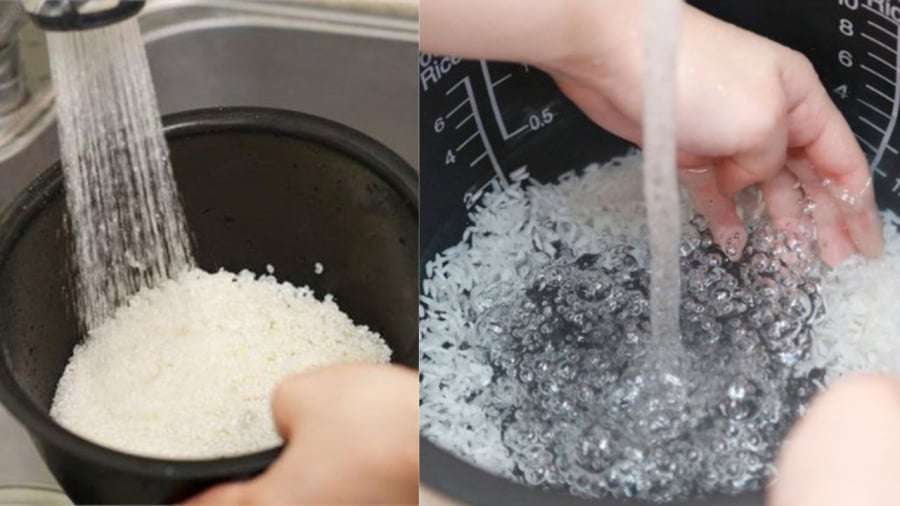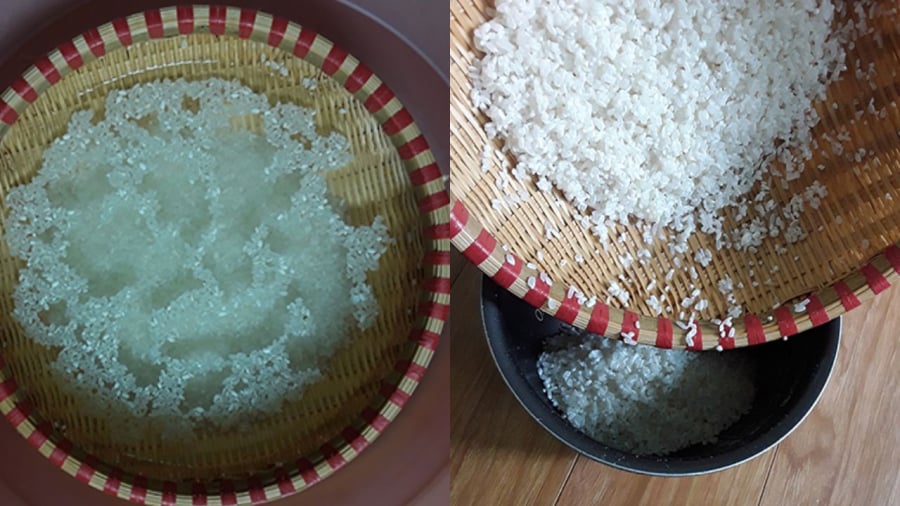Living in the modern era, many people choose to wash rice directly in the rice cooker pot for convenience, speed, and less need for extra bowls and basins. However, this habit hides several risks to your health, the appliance’s longevity, and even electrical safety. This article will discuss why you shouldn’t wash rice in your rice cooker pot and why it’s essential to change this seemingly harmless practice.
1. The non-stick coating of the rice cooker pot is prone to scratching when used for rice washing
One reason not to wash rice in the rice cooker pot is the non-stick coating inside. Most modern rice cookers have a non-stick coating to prevent scorching and facilitate cleaning. However, this coating is thin and susceptible to scratching if subjected to vigorous scrubbing or hard objects like hands, fingernails, or even rice grains during washing.
When the non-stick coating peels off, it not only diminishes the quality of cooked rice but also poses health risks. Some chemicals in the coating, if ingested, can be detrimental to your liver, kidneys, or endocrine system if they accumulate over time.

2. Damaging the rice cooker pot
The rice cooker pot is not just about the non-stick coating; it’s also made of a specially designed heat-conducting metal material. If you wash rice with water directly in the pot and leave it there, the metal part in contact with water may corrode over time. This reduces heat conduction efficiency, resulting in longer cooking times, higher electricity consumption, and potential damage to the cooker.
Moreover, corrosion can create oxidized spots on the metal surface. These spots are not only unsightly but also risk flaking into your food during cooking, affecting its taste and quality.
Washing rice with force or frequently moving the pot can deform the bottom or disrupt the contact between the pot and the heating plate. A bent or slightly warped bottom will cause uneven heat distribution, leading to undercooked, overcooked, or dry rice.
Additionally, the temperature sensor at the bottom of the rice cooker relies on a tight connection between the pot and the heating plate. If the pot is deformed, the sensor may malfunction, resulting in burnt or undercooked rice, or the cooker may fail to turn off automatically—a potentially dangerous situation.
3. Insufficient cleaning when washing rice in the rice cooker pot
Washing rice in the rice cooker pot doesn’t clean it as effectively as using a colander, especially if the rice is dusty or contaminated with chemicals. When you drain the water, some of the dirty water remains.
Using a perforated colander and pouring water from above creates a swirling motion that washes away the dirt more effectively.
4. Increased risk of electrical leakage and unsafe use
Although not an electronic device like a wire conductor, the rice cooker pot is intimately connected to electricity during cooking. When you wash rice, water can linger on the outer surface of the pot, and if not dried properly, it can cause moisture to enter the electrical circuits, increasing the risk of electrical leakage and potentially causing electric shocks or short circuits.
5. Shortening the lifespan of the rice cooker
All the aforementioned issues culminate in a clear consequence: shortening the lifespan of your rice cooker. A typical cooker can last for 5–7 years, but frequent scratches, dents, or improper water exposure can accelerate its deterioration, requiring premature replacement. This not only incurs additional costs but also contributes to electronic waste, impacting the environment.

6. The best alternative for washing rice
The simplest and safest option is to use a perforated colander. These are easy to clean, durable, and won’t affect the rice grains’ quality, ensuring a more thorough cleaning process.
Washing rice directly in the rice cooker pot is a common practice in Vietnamese households, but it’s important to recognize its potential drawbacks, from appliance damage to health risks.

































